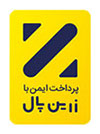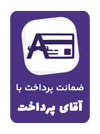This post is a spin-off from the Q&A I had with Agustin and Maggie who are going to raise their baby girl bilingually in a language no their own. I’ve actually suggested the following idea to parents who would like to raise their children bilingually in their home but just don’t feel capable of maintaining the target language permanently. The idea is that a language corner would allow parents to speak with their child or children in the target language only while in that area of the home. Also, read 5 Reasons to Set Up a Language Learning Corner for your Bilingual Child over at Learn Safari!
To be honest, we don’t have a language corner in our home, because our entire home is our language corner! But, if I were to commit to teaching my children a language that I couldn’t integrate 100% into our daily living, then a language corner is definitely what I would do.
For starters, the idea behind a language corner is the understanding that to teach a child two or more languages simultaneously, there must be a clear distinction between the languages. That distinction can be made in the following ways:
- by the parents (thus the OPOL – one parent one language method) or
- by time (similar to what I do with my children by speaking English or Spanish for two weeks at a time) or
- by space (as in within the home and outside of the home, or assigning a different language to different areas of the home or by creating just one specific space where that language is spoken as in a language corner!).
So this is my vision of a language corner and how it can work to help you teach another language to your children by setting up a small workshop within the comforts of your home.
- Make it comfy, colorful and cultural! Fill your language corner with cushions and decorate with world maps or artifacts from the country where the target language is spoken. The more colorful, the better – to appeal to the eye and stimulate the senses.
- Keep it well stocked with language resources. Books, toys, games, flashcards, music. Whatever can help you to introduce language and engage conversation and play will come in handy if kept in this spot.
- Decide on a specific time and rhythm for time spent in the language corner. Every night after dinner? Every Saturday morning? For five minutes or a 1/2 hour? More important than the length of time is the frequency and consistency. Every day for 5-10 minutes is better than two hours once a month, but choose something that works for you and your child. Set a goal and stick to it!
- Keep it light and fun! Remember, this is not about an academic language course but one-on-one time together to build on your relationship in the target language. Time spent in the language corner should be worthy of happy memories for years to come.
- Use lots of books. One of the very best things we can do for our children is read to them. This is the same when raising a bilingual or multilingual child. Picture books are filled with endless possibilities to build vocabulary. Story books allow them to hear the syntax, rhythm and pronunciation of the language.Later, chapter books will allow them to build on their language knowledge, using their imagination and filling in gaps. (By the way, don’t worry if your accent is not perfect! There is much you can do to make sure your child is exposed to the correct pronunciation in other settings.)
- Play and be creative! Simple toys in the language corner can also provide you with the chance to model the language for your child. A set of animals to learn their names and the sounds they make… A tea set and play food to learn food vocabulary… Craft supplies to allow you opportunities for creativity, especially for those hands-on learners.
- Use board games. Board games are a fun way for children who are a bit older to get involved in the target language. Teach them the basics to get started and then learn the vocabulary and phrases together as you play along. It’s my turn, it’s your turn… I’m winning… Roll the dice… are all repeated many times during a game. And repetition is a good thing, especially in second language acquisition.
Do you think a language corner could work for your family and what else would you include?

 Persian
Persian  English
English  Arabic
Arabic 


